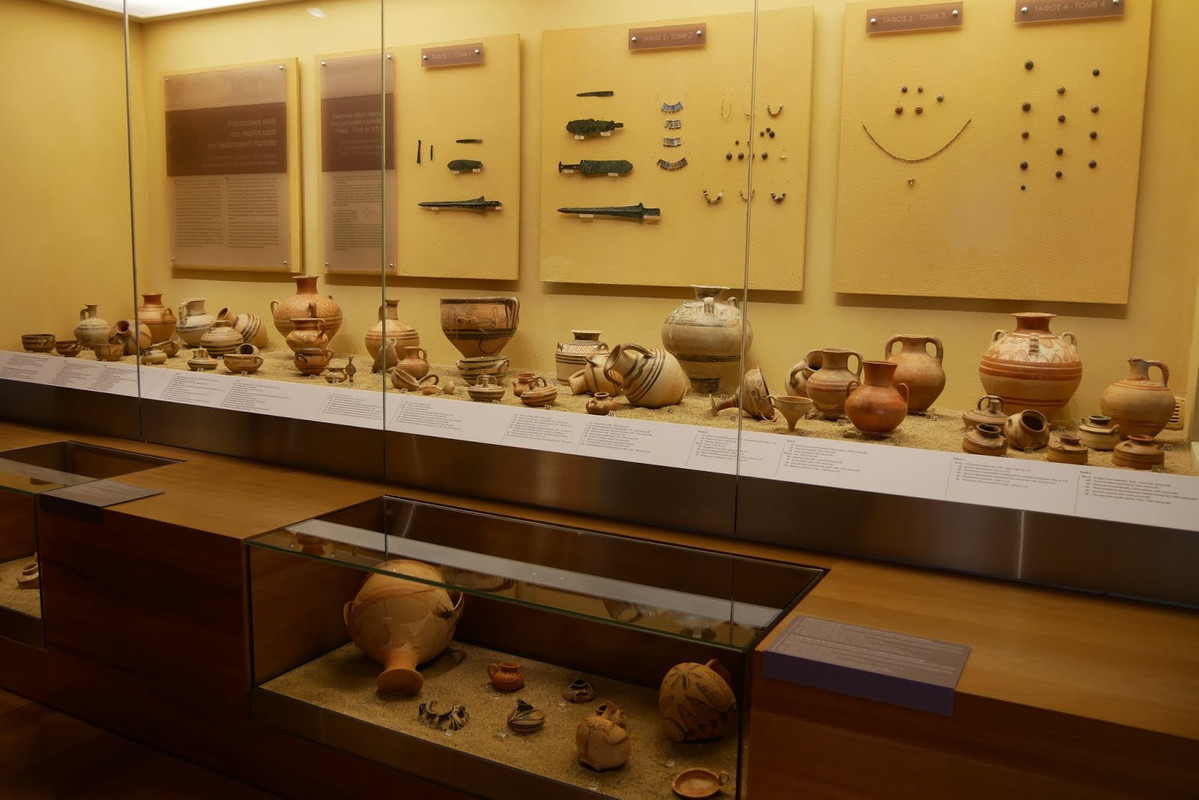Archaeologists discovered many loom weights at the site, indicating that it was probably a textile 'hotspot'. The pots imported from Crete that were found there indicate that it likely had/was a large trading hub where it would've traded its textiles to other cities. Other recovered ceramics confirm there were Mycenaean occupants living there.
The architecture found there was impressive for its time. It had a network of streets and roads, 2 storey houses with gardens, a cemetery and a modern-like water management system, which had channels and pipes. Up to 15 buildings were found at the site, each with about 12 rooms. The ruins were also indicated by large stone walls up to 3 stones tall, made of aeolinate, sandstone and limestone.

The architecture found there was impressive for its time. It had a network of streets and roads, 2 storey houses with gardens, a cemetery and a modern-like water management system, which had channels and pipes. Up to 15 buildings were found at the site, each with about 12 rooms. The ruins were also indicated by large stone walls up to 3 stones tall, made of aeolinate, sandstone and limestone.
